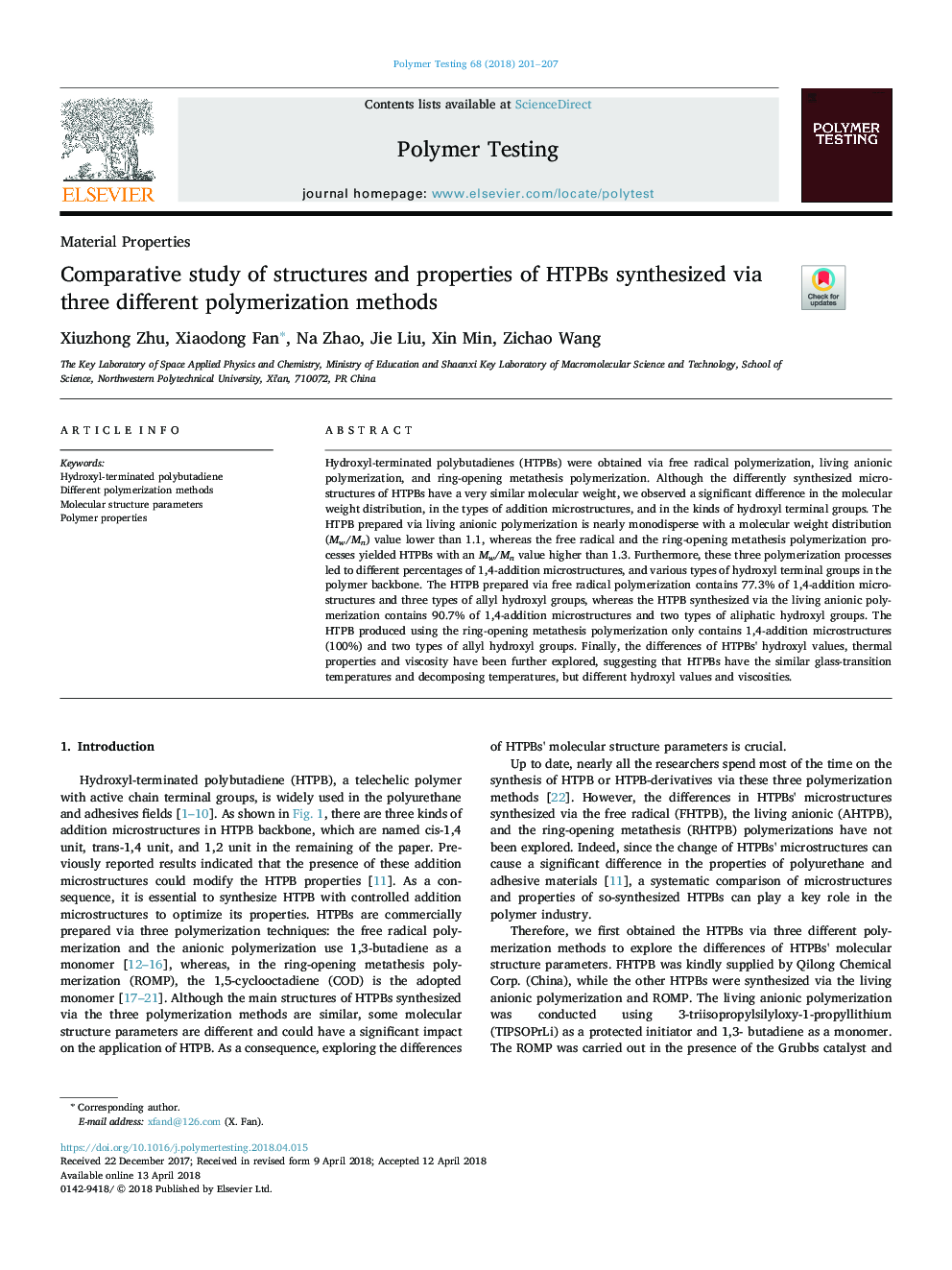| Article ID | Journal | Published Year | Pages | File Type |
|---|---|---|---|---|
| 7824910 | Polymer Testing | 2018 | 7 Pages |
Abstract
Hydroxyl-terminated polybutadienes (HTPBs) were obtained via free radical polymerization, living anionic polymerization, and ring-opening metathesis polymerization. Although the differently synthesized microstructures of HTPBs have a very similar molecular weight, we observed a significant difference in the molecular weight distribution, in the types of addition microstructures, and in the kinds of hydroxyl terminal groups. The HTPB prepared via living anionic polymerization is nearly monodisperse with a molecular weight distribution (Mw/Mn) value lower than 1.1, whereas the free radical and the ring-opening metathesis polymerization processes yielded HTPBs with an Mw/Mn value higher than 1.3. Furthermore, these three polymerization processes led to different percentages of 1,4-addition microstructures, and various types of hydroxyl terminal groups in the polymer backbone. The HTPB prepared via free radical polymerization contains 77.3% of 1,4-addition microstructures and three types of allyl hydroxyl groups, whereas the HTPB synthesized via the living anionic polymerization contains 90.7% of 1,4-addition microstructures and two types of aliphatic hydroxyl groups. The HTPB produced using the ring-opening metathesis polymerization only contains 1,4-addition microstructures (100%) and two types of allyl hydroxyl groups. Finally, the differences of HTPBs' hydroxyl values, thermal properties and viscosity have been further explored, suggesting that HTPBs have the similar glass-transition temperatures and decomposing temperatures, but different hydroxyl values and viscosities.
Related Topics
Physical Sciences and Engineering
Chemistry
Organic Chemistry
Authors
Xiuzhong Zhu, Xiaodong Fan, Na Zhao, Jie Liu, Xin Min, Zichao Wang,
